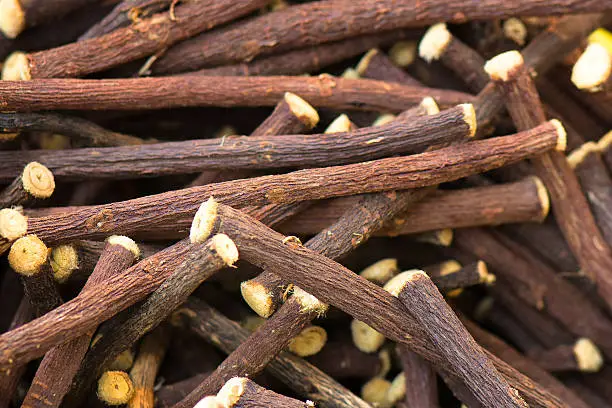Last Updated on April 15, 2024 by Real Men Sow
You’ve probably tried to buy a Christmas stocking-filler for a liquorice-lover and failed. There is something for everyone, from black liquorice wheels to all sorts of liquorice to Pontefract cake – even the highly salted liquorice confections popular in Nordic countries. You can enjoy liquorice if you wish.
However, liquorice extract comes from the root of a plant which can be easily grown in many places. The true liquorice root, Glycyrrhiza.glabra, tastes far better than the processed sugary sweets sold in shops. It seems odd that liquorice root isn’t more widely grown, given how passionate liquorice lovers feel about this culinary delight.
Growing Liquorice
It is easy to see why liquorice isn’t more popular when you consider how long it takes for a harvest. The harvest of liquorice plants is not possible commercially until they reach four- or five years old. It is possible to harvest a small amount of liquorice plants in your home garden after three years, which is about how long it takes to harvest your first asparagus harvest.
How Long Does It Take To Grow Liquorice
If you are patient, the rewards will be well worth the effort. Although it is not difficult to grow from seed, germination can sometimes be unpredictable so make sure you have extra sows in case of mishaps. In mid- to late spring, or early fall, sow seeds on top of potting compost. Cover them to keep them warm, around 20°C (68°F). With any luck, your liquorice seedlings will have appeared two to three weeks later.
You may also be able to source plants that are one- to two years old. From its second year, liquorice will produce new shoots by spreading underground stems (known as rhizomes). These stems can be removed and used to grow new plants.
Liquorice Growing Conditions
It is easy to see why liquorice isn’t more popular when you consider how long it takes for a harvest. The harvest of liquorice plants is not possible commercially until they reach four- or five years old. It is possible to harvest a small amount of liquorice plants in your home garden after three years, which is about how long it takes to harvest your first asparagus harvest.
It is a riverbank plant and it loves sunshine and water. That’s why you shouldn’t grow them in frost pockets and windy areas. Sandy soil is essential. Preparing your soil before planting is a good idea if it is extremely heavy. Dig a pit that is at least 2 spits in width and depth (a spit measures the length of a spade blade). Mix the soil with lots and plenty of compost, then remove any stones.
Like other legumes, liquorice fixes nitrogen at the roots and so does not require additional fertiliser. However, it will appreciate some mulching to keep weeds down, retain moisture, and provide extra nutrients. Don’t let the soil dry.
Plants can become infested by spider mites, caterpillars, and slugs, it’s also good to keep them away from rabbits too.
Harvesting Liquorice
Your liquorice root plant will be ready to reap the rewards when it is time. The roots are long, flexible, brownish-yellow and have a yellow interior. The thickest horizontal roots should be harvested. However, the tap root and the thinner horizontal roots can be left to grow on. For winter in cold regions, cover it or replant.
Is Homegrown Liquorice Sweet?
Freshly mashed, the root is sweet and slightly salty. As you chew the root, the sweetness increases. You can use liquorice to flavor a variety of sweets, dishes, and beverages. You can also dry the roots for later use in baking and tea. To flavor cakes, keep a root in a container of sugar.
It is important to harvest it every year as liquorice roots can grow to incredible lengths if they are not harvested. It is quite common to see it grow up to four meters (13ft) and up to eight meters (26ft).

